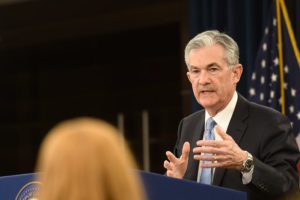
Here comes the propaganda from the Fed research staff. A new research piece from the Federal Reserve Bank of New York claims the greatest intervention and bailout of speculators, leveraged hedge funds, and others who took too much risk or borrowed too much is all roses and butterflies.
The researchers claim the Fed’s bailout created no moral hazard. Really?
Were these guys huffing paint fumes, or is this just another in a long line of propaganda pieces that claim everything the Fed does makes the world a better place?
One hopes it was only the latter, but it’s difficult to distinguish with such a naïve conclusion.
Bloomberg has the details.
The unprecedented speed and scale of the Federal Reserve’s buying of Treasuries and mortgage debt to aid a severely impaired bond market has accomplished that without raising the specter of moral hazard, Federal Reserve Bank of New York researchers wrote in a note.
Pandemic-sparked volatility in March caused liquidity in the world’s biggest bond market to plunge to its worst since the 2008 financial crisis. The Fed responded with purchases of Treasuries and mortgage securities that peaked at more than $100 billion a day combined.
It’s still soaking up about $80 billion of Treasuries and at least $40 billion of mortgage securities a month, and some bond veterans warn that the central bank’s involvement in the market could potentially be encouraging risky behavior, such as excessive borrowing. But a post Thursday in the New York Fed’s Liberty Street blog argued against that.
“The magnitude of the Desk’s purchase program in 2020 ‘to support the smooth functioning’ of the Treasury and agency MBS markets marked those purchases as highly unusual,” wrote Kenneth Garbade, a senior vice president in the New York Fed’s Research and Statistics Group, and Frank Keane, a senior policy advisor. But they also say that the tool has been used before and “the infrequency of Federal Reserve intervention suggests that relying on the Fed on those rare occasions when markets are in extremis has not materially exacerbated moral hazard.”
Although never at the same scale as in 2020, the Fed in the past used large-scale debt purchases to support liquidity and the ability to trade in the Treasury market. It did that in 1939 at the start of World War II, again in 1958 in connection to a poorly received Treasury financing deal, and in 1970, according to Garbade and Keane.
“The three episodes, together with the more recent intervention, demonstrate the Fed’s long-standing and continuing commitment to the maintenance of orderly market functioning in markets where it conducts monetary policy operations — formerly limited to the Treasury market, but now also including the agency MBS market,” they said.



